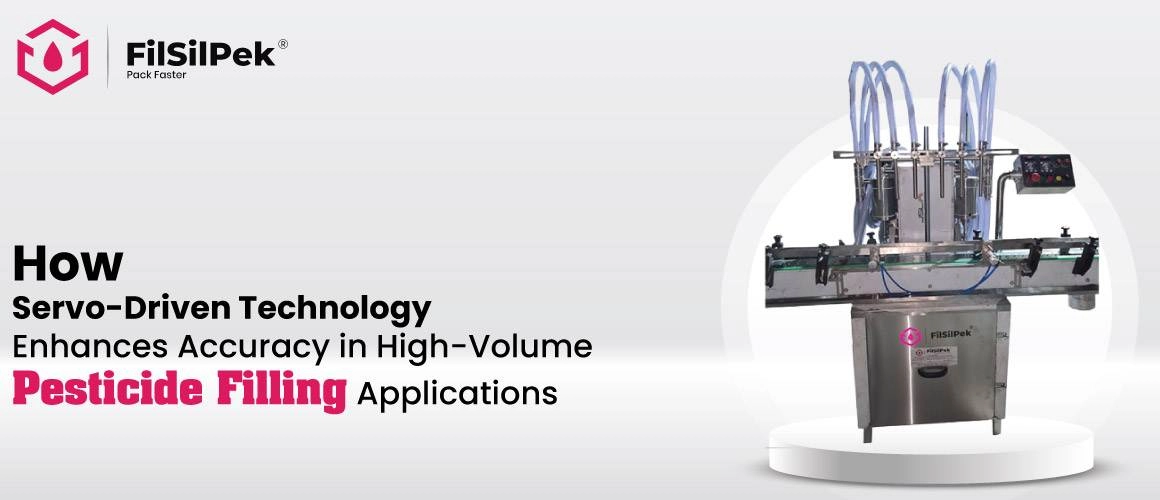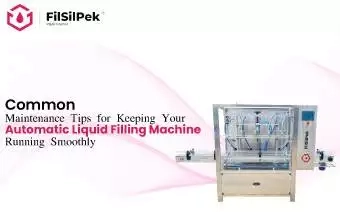How Servo-Driven Technology Enhances Accuracy in High-Volume Pesticide Filling Applications
Pesticides play a crucial role in modern agriculture, helping to protect crops from pests and diseases while enhancing yield quality. However, the filling process for pesticides presents significant challenges. Inaccurate filling can lead to costly over-application or under-application, impacting both crop health and regulatory compliance. Traditional filling systems often struggle with maintaining consistent fill volumes, resulting in variability due to factors such as fluctuating pressure, temperature, and viscosity. Additionally, the time-consuming changeovers between different pesticide formulations can lead to increased downtime, reduced productivity, and higher operational costs.
To address these challenges, the implementation of automatic pesticide filling machines has become essential. These advanced systems utilize cutting-edge technologies, such as servo-driven controls, to ensure precise dispensing, improve operational efficiency, and minimize waste. By automating the filling process, manufacturers can achieve greater accuracy and consistency, while also reducing labor costs and downtime. In this article, we will explore the technical aspects of servo-driven systems, their operational advantages, and how they significantly enhance accuracy in high-volume pesticide filling applications.
What is Servo-Driven Technology?
Servo-driven technology utilizes electric servo motors that are governed by a closed-loop feedback system. This system differs from traditional pneumatic or mechanical filling methods, allowing for high levels of precision, responsiveness, and control in filling operations.
Key Components of Servo-Driven Systems
- Servo Motors: These motors offer precise control over rotational speed, position, and torque. Unlike conventional motors, servo motors can make rapid adjustments based on real-time feedback, providing superior accuracy in filling applications.
- Programmable Logic Controllers (PLCs): Advanced PLCs coordinate the servo motors’ operations, managing essential filling parameters, including volume, speed, and timing. They execute complex algorithms that optimize filling cycles according to current conditions.
- Sensors: High-precision sensors are integrated into the filling system to monitor variables such as fill volume, viscosity, and environmental conditions. This real-time data is crucial for maintaining accuracy and adjusting the process dynamically.
- Human-Machine Interface (HMI): The HMI allows operators to monitor and control the filling process intuitively, providing insights into operational efficiency, production metrics, and maintenance alerts.
Challenges in Traditional Pesticide Filling
While traditional filling systems have been widely used, they come with inherent challenges that can hinder operational efficiency and accuracy. Some of these challenges include:
1. Inconsistent Fill Volumes
Traditional pneumatic or mechanical filling systems often struggle with maintaining consistent fill volumes. Variability in pressure, temperature, and the physical properties of the pesticides can lead to significant discrepancies in the amounts dispensed, resulting in potential over-application or under-application.
2. Slow Changeover Times
When switching between different pesticide formulations, traditional systems often require extensive manual recalibration. This process can be time-consuming and labor-intensive, leading to increased downtime and reduced productivity during changeovers.
3. Limited Control and Feedback Mechanisms
Many conventional filling systems lack sophisticated feedback mechanisms. This limitation means that adjustments cannot be made in real-time, which can lead to inaccuracies that only become apparent after the fact, potentially resulting in regulatory issues or product recalls.
4. Higher Maintenance Costs
Mechanical systems often involve more moving parts and are susceptible to wear and tear, leading to frequent breakdowns. This results in higher maintenance costs and can cause unplanned production stoppages, affecting overall operational efficiency.
5. Environmental and Safety Concerns
Traditional filling methods can create more waste and spillage, posing environmental risks. Inadequate control over filling can lead to chemical leaks, which not only harm the environment but also raise safety concerns for workers handling hazardous materials.
Key Advantages of Servo-Driven Technology in Pesticide Filling
1. Unmatched Accuracy
Achieving precise dosing is essential in pesticide filling. Servo-driven systems enhance accuracy through:
- Closed-Loop Feedback: This feedback mechanism allows for instantaneous adjustments to fill volumes, minimizing variances and ensuring adherence to dosing requirements.
- Microstep Control: Servo motors can operate in microsteps, enabling fine-tuned adjustments that traditional systems cannot match. This capability is critical for managing varying fill volumes and adapting to different pesticide formulations.
2. Enhanced Efficiency
Efficiency is a key factor in high-volume production settings. Servo-driven systems boost efficiency by:
- Dynamic Speed Control: The ability to adjust motor speeds based on real-time demands reduces cycle times while maintaining accuracy.
- Quick Changeovers: The programmability of servo systems allows for rapid reconfiguration for different products, minimizing downtime typically associated with product changeovers.
3. Reduced Waste
Minimizing waste is vital in pesticide manufacturing. Servo-driven technology achieves this through:
- Precision Dispensing: High accuracy in dosing ensures that the correct volume is dispensed consistently, reducing the likelihood of overfills and spills.
- Automated Calibration: Advanced servo systems can perform self-calibrations based on specific product characteristics, ensuring optimal performance and minimizing product waste.
4. Comprehensive Data Logging and Analytics
Data collection is integral to modern manufacturing. Servo-driven systems often feature:
- Real-Time Monitoring: Continuous data logging enables manufacturers to analyze production metrics, identify bottlenecks, and pinpoint areas for improvement.
- Predictive Maintenance: By assessing performance data, manufacturers can implement predictive maintenance strategies that reduce unplanned downtime and extend equipment lifespan.
5. Flexibility for Diverse Applications
With a wide range of pesticide formulations available, adaptability in filling processes is essential. Servo-driven technology offers:
- Configurability: The flexibility to adjust fill parameters and accommodate various pesticide types—whether liquids, gels, or powders—without extensive reconfiguration.
- Integration with Other Systems: Servo-driven filling machines can easily integrate with upstream and downstream equipment, such as mixing systems and packaging lines, facilitating a cohesive production process.
Conclusion
The integration of servo-driven technology in high-volume pesticide filling applications represents a significant advancement in manufacturing capabilities. With addressing and reducing the challenges of traditional filling methods and enhancing accuracy, efficiency, and waste reduction, servo systems enable manufacturers to meet the increasing demands of the industry.
For more information on how our servo-driven filling solutions can transform your pesticide filling process, contact us at [email protected].
Common Maintenance Tips for Keeping Your Automatic Liquid Filling Machine Running Smoothly
Maintaining an automatic liquid filling machine is crucial for ensuring its…
How to Prevent Cross-Contamination in Powder Filling with an Automatic Filling Machine?
In industries like pharmaceuticals, food processing, and cosmetics, maintaining..
Best Practices for Ensuring Hygiene and Safety in Automatic Liquid Filling Processes
Maintaining hygiene and safety in automatic liquid filling processes is critical, especially in industries like food,…



